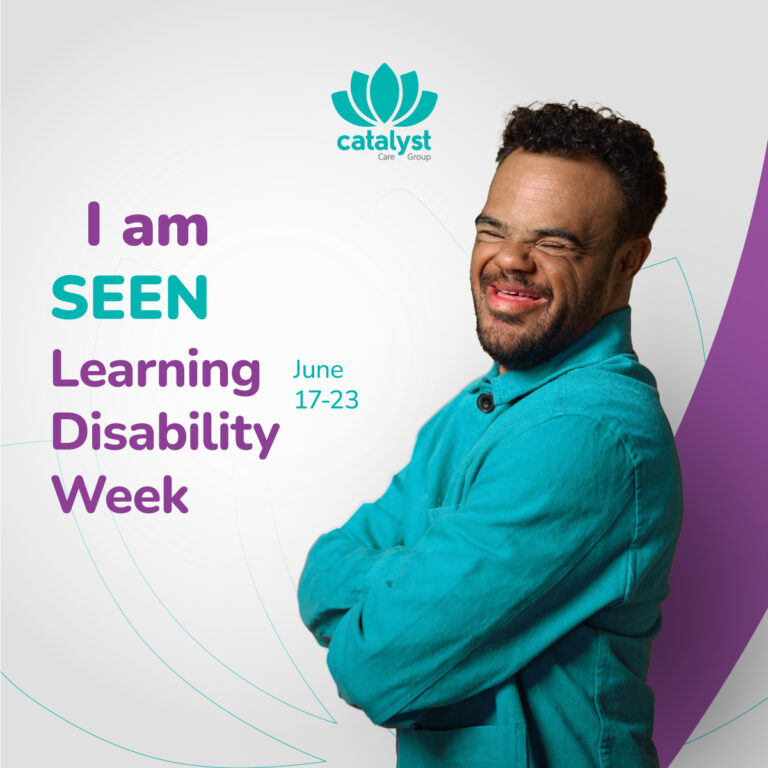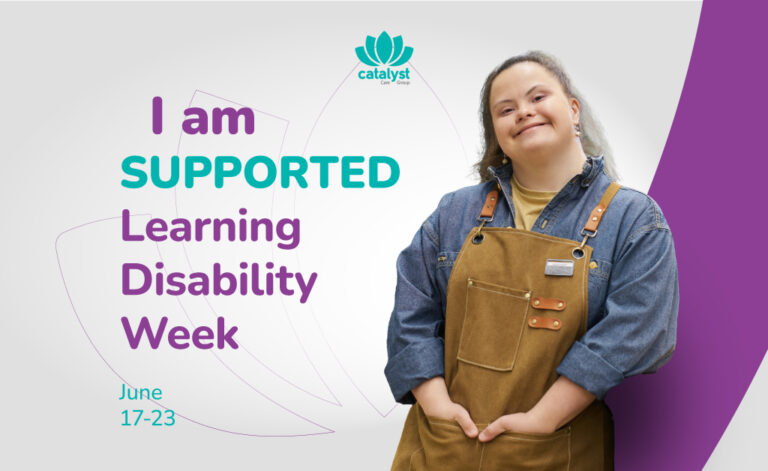Anxiety has become an inevitable part of life in today’s world. Whether it’s triggered by stress or sudden, unexpected change, most of us recognise that physical response – tension, racing thoughts, or a body on edge. The relationship between autism and anxiety is even stronger.
While around 10–15% of the general population experience an anxiety disorder at some point in their lives, autism research suggests that as many as 8 in 10 autistic children, adolescents, and adults live with one or more anxiety disorders.
Before we look at how to reduce anxiety, we first need to understand how anxiety and autism are linked. Let’s take a closer look.
How Common is Anxiety in Autistic People?
Research suggests that almost 50% of autistic people experience anxiety disorder appearing from an early age and often continuing into adulthood. A comprehensive review of published studies has shown that approximately 40% of autistic children live with some form of anxiety. The most common reasons include sensory sensitivities, social challenges, and disruptive daily routines among others.

Specific phobias, generalised anxiety disorder and social anxiety disorder are most common anxiety-related experiences of autistic people. However, identifying anxiety disorder in autistic people can sometimes be a challenge because the symptoms may present in an unusual way. Therefore, the first and most important step is recognising anxiety symptoms in autistic adults and children.
The right and timely intervention can significantly improve people’s quality of life and functioning, including:
- Better sleep
- Stronger relationships
- More confidence in navigating everyday situations
- Building a sense of comfort, safety, and independence
Signs of Anxiety in Autistic People
Anxiety can show up in many different ways for autistic people. Because each person experiences the world uniquely, anxiety symptoms in an autistic person might not always look like what expected. Sometimes, it’s easy to miss – especially when it blends with everyday autistic traits. But when we learn to recognise it, we can offer better support, comfort, and care.
Most common signs of anxiety in autistic people include:
- More frequent or intense stimming – Like rocking, hand-flapping, or repeating phrases to self-soothe.
- Withdrawing or shutting down – Needing extra quiet time, avoiding conversations, or going nonverbal when overwhelmed.
- Meltdowns or sudden outbursts – Especially when routines change or things feel unpredictable.
- Physical discomfort – Stomachaches, headaches, or feeling extra sensitive to lights, sounds, or touch.
- Strong need for routine – Feeling deeply unsettled when plans shift, even in small ways.
- Trouble sleeping – Restlessness, nightmares, or difficulty winding down at night.
- Avoiding certain places or situations – Like crowded spaces, school, or social events that feel too demanding.
- Increased irritability – Seeming frustrated or on edge without an obvious reason.
The Impact of Anxiety on Autistic People
Identifying anxiety disorders in autism can sometimes be challenging, as they often manifest in atypical ways. For instance, while social anxiety typically stems from a fear of embarrassment or judgment, autistic individuals may experience it due to difficulties in managing social interactions rather than concerns about others’ opinions.
Additionally, many autistic people may feel intense distress over potential disruptions to routines or restrictions on certain (sometimes repetitive) activities. While this may resemble obsessive-compulsive disorder (OCD), a key difference is that OCD behaviours aim to alleviate anxiety from intrusive thoughts, whereas autistic people may simply seek comfort in routines.
Similarly, autistic people may develop intense fears of unconventional or highly specific stimuli – such as birthday songs, TV shows, or doorways – that wouldn’t typically be linked to common phobias.
Shutdowns, Meltdowns, Masking as a Result of Anxiety
Anxiety can affect autistic people in a variety of ways, often showing up through behaviours that might seem confusing without understanding the underlying causes. Three common responses connected to anxiety are shutdowns, meltdowns, and masking. Each of these reactions reflects how anxiety impacts the mind and body differently and recognising them can help provide more effective and compassionate support.
- Shutdowns:
Shutdowns often occur when anxiety becomes overwhelming, and the person feels unable to cope with the intensity of their emotions or the demands around them. During a shutdown, an autistic person might withdraw inwardly, becoming very quiet, unresponsive, or disengaged. This is the body and mind’s way of conserving energy and protecting itself from further stress. It’s important to recognise shutdowns as a response to anxiety rather than deliberate avoidance or defiance. - Meltdowns:
Meltdowns are intense emotional responses triggered by anxiety that has built up beyond a person’s ability to manage. Unlike typical tantrums, meltdowns are involuntary and arise from feelings of distress, frustration, or sensory overload. During a meltdown, a person might cry, yell, or exhibit physical movements that help release tension. Understanding meltdowns as a sign of overwhelming anxiety helps create a more compassionate response, focusing on support rather than punishment. - Masking:
Masking is a common way autistic people manage anxiety by consciously or unconsciously hiding their true feelings and behaviours to fit social expectations. While masking can help navigate challenging situations, it often requires a significant amount of mental effort and can increase anxiety over time. This constant need to “hide” oneself may lead to exhaustion and feelings of isolation, making it essential to create safe spaces where people feel accepted as they are.
What Can Cause Anxiety in Autistic People?
Anxiety can arise from many different sources, and for autistic people, certain factors may have a stronger impact or present uniquely. Understanding these triggers helps us better recognise when someone is struggling and how to offer support tailored to their experience. Some common causes include mental health associated factors, sensory overload, panic attacks, social pressures, and changes to routine.

Sensory Overload
Anxiety in autistic people is often linked to other mental health challenges such as depression or obsessive thoughts, which can compound feelings of worry or fear. Sensory overload is another frequent trigger – loud noises, bright lights, or overwhelming environments can cause intense discomfort and heighten anxiety levels. In some cases, this anxiety escalates to panic attacks, where the person experiences sudden, intense fear accompanied by physical symptoms like a racing heart or difficulty breathing, making it hard to function in the moment.
Social Pressures
Social situations can create significant anxiety for autistic people, especially when there’s pressure to meet expectations or navigate complex social cues. The need to “fit in” or mask true feelings often leads to stress and self – consciousness, causing people to feel anxious about interactions, conversations, or group settings. This pressure can be exhausting and sometimes discourages participation, further increasing feelings of isolation.
Routine Changes
Many autistic people find comfort and stability in familiar routines and predictable environments. Sudden or unexpected changes – whether small or large – can be unsettling and provoke anxiety. The loss of predictability challenges their sense of control and safety, making it harder to manage day-to-day life and increasing emotional distress.
Types of Anxiety Disorders Common in Autism
Anxiety disorders often present differently in autistic people compared to the general population. Recognising the specific types that are more common helps in understanding and supporting those affected. Among autistic people, social anxiety disorder, generalized anxiety disorder (GAD), and obsessive-compulsive disorder (OCD) are frequently observed, each with unique features and challenges.
Social Anxiety Disorder
Social anxiety disorder involves an intense fear of social situations where the person worries about being judged, embarrassed, or rejected. For autistic people, this can be particularly challenging due to difficulties with social communication and interpreting social cues. The fear of misunderstanding others or being misunderstood themselves can lead to avoidance of social settings, making everyday interactions a source of significant stress and anxiety. This anxiety often impacts school, work, and relationships, sometimes causing withdrawal or isolation.
Generalised Anxiety Disorder (GAD)
Generalised anxiety disorder is characterised by persistent, excessive worry about a variety of everyday issues, even when there is little or no reason for concern. In autistic people, this constant worry can be focused on things like health, family, future events, or daily tasks.
The ongoing tension may result in physical symptoms such as restlessness, difficulty concentrating, and fatigue, which further affect daily functioning. Because autistic people may also experience challenges with emotional regulation, managing GAD can require tailored approaches that address both anxiety and sensory or communication needs.
Obsessive-Compulsive Disorder (OCD)
Obsessive-compulsive disorder shares some features with anxiety, including intrusive thoughts (obsessions) and repetitive behaviours (compulsions) performed to reduce distress. However, in autism, repetitive behaviours are often a natural part of how someone copes with the world rather than the result of OCD.
While OCD compulsions are typically driven by anxiety related to specific fears or intrusive thoughts, autistic repetitive behaviours may serve to provide comfort, predictability, or sensory regulation. Differentiating between OCD and autism-related repetitive behaviours is important because it guides how best to support and treat anxiety when it is present.
Strategies for Supporting Autistic People with Anxiety
Treating anxiety in autistic people involves more than managing symptoms – it requires understanding the person’s experience and supporting them in ways that feel safe, respectful, and effective. Because anxiety may be triggered by sensory overload, social expectations, or disruptions to routine, support needs to be personalised and consistent. With the right approaches, it’s possible to reduce distress and improve daily life.
Creating Supportive Environments
A calm, predictable environment can go a long way in reducing anxiety. This might include minimising sensory triggers like loud noise or bright lights, offering access to quiet spaces, and using clear, consistent communication. Providing structure and giving advance notice of any changes can help create a sense of safety. Supportive environments also mean emotional safety – where autistic people feel understood, accepted, and not pressured to mask or suppress their natural ways of being.
Therapeutic Interventions
Therapeutic Interventions
Therapies can be effective in reducing anxiety for autistic people when they are adapted to respect sensory needs, communication preferences, and thinking styles. Cognitive Behavioural Therapy (CBT), when tailored with visual supports such as PECS (Picture Exchange Communication System), can help people identify what’s causing their anxiety and explore new ways to respond.
Positive Behaviour Support (PBS) offers a structured, person-centred approach that focuses on understanding the reasons behind anxiety and developing supportive strategies. Multimedia tools – like videos, interactive visuals, and personalised content – can also play a key role in helping people engage with therapeutic approaches in ways that feel accessible and meaningful. The most helpful interventions are those that meet people where they are and focus on practical, real-life support.
Autism Support with Catalyst Care Group
At Catalyst Care Group, we recognise how overwhelming life can feel for autistic people and for people living with mental health needs – especially when the world doesn’t always make space for different ways of thinking, feeling, or coping. That’s why we take a gentle, person-led approach. We listen without judgement, work at the person’s pace, and build support around what feels safe, familiar, and meaningful to them.
Our support includes:
- Therapeutic Positive Behaviour Support (PBS) – offering practical, strengths-based strategies that reduce distress and improve quality of life
- Community Psychiatric Nurses – providing consistent and compassionate mental health support
- PECS (Picture Exchange Communication System) – helping people express themselves in ways that feel natural and accessible
- Multimedia tools – using visual stories, personalised video content, and interactive tools to support communication and emotional regulation
- PROACT-SCIPr-UK® – a therapeutic, proactive model focused on respectful, low-arousal support
- Autism-accredited practice – ensuring our teams, environments, and approaches reflect an in-depth understanding of neurodiversity and trauma-informed care
We support people through life’s challenges – whether that’s anxiety, changes in routine, or communication barriers – by providing the right tools, the right people, and the right environment to help them feel heard, safe, and in control.
If you’re supporting a loved one who is autistic and experiences anxiety, we’ll work alongside you and your family to understand what helps them feel safe, calm, and in control – so daily life feels more manageable, and connection feels possible again.













